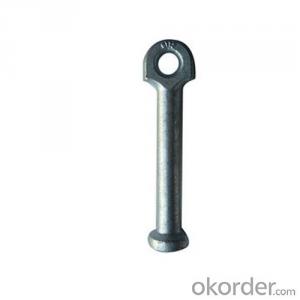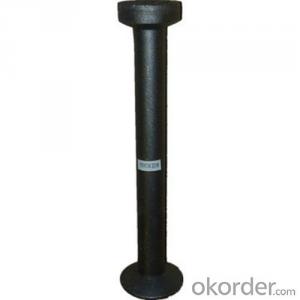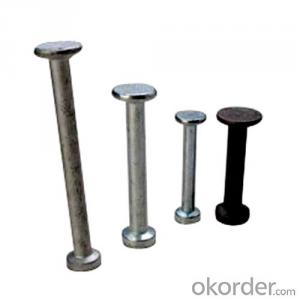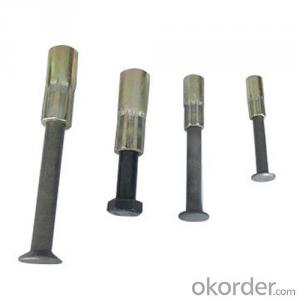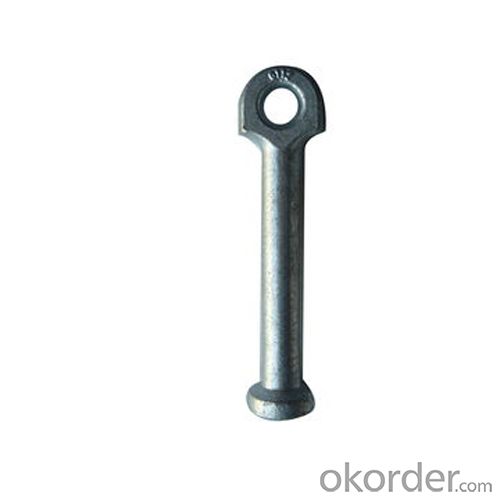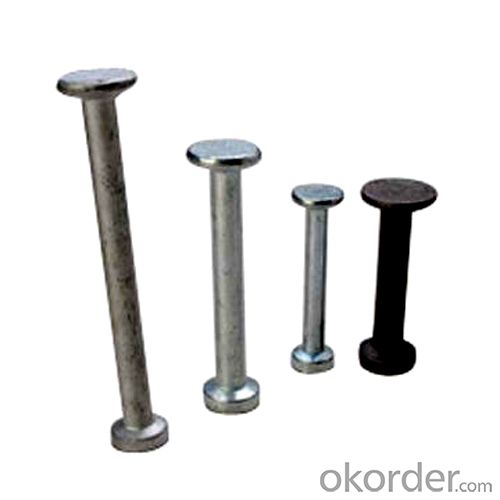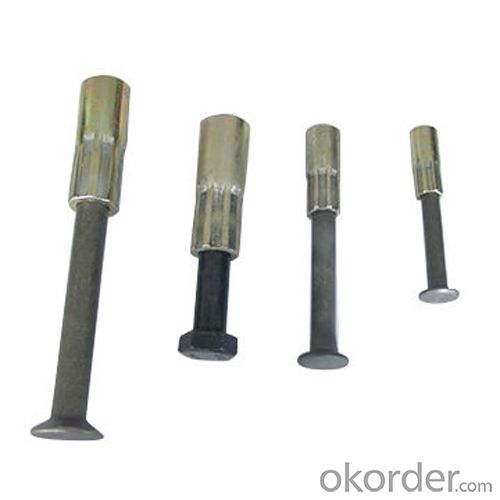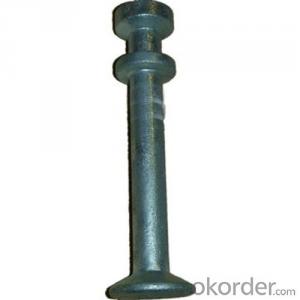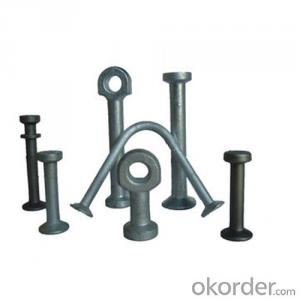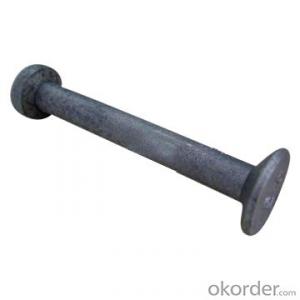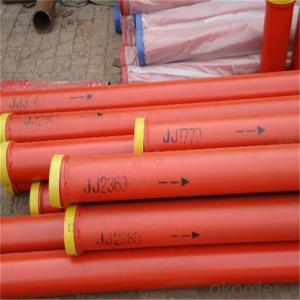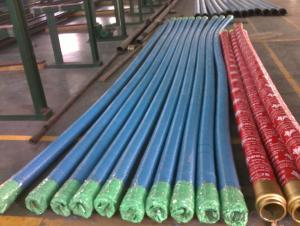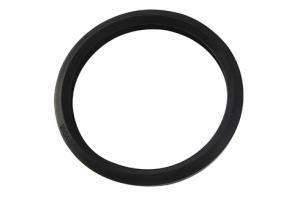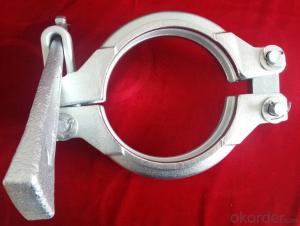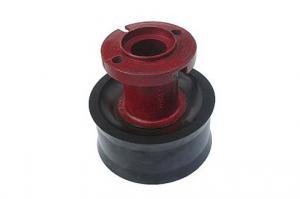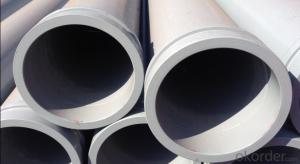Lifting Anchor Forged Straight Type Long Design IIII
- Loading Port:
- Tianjin
- Payment Terms:
- TT OR LC
- Min Order Qty:
- 100 pc
- Supply Capability:
- 10000 pc/month
OKorder Service Pledge
OKorder Financial Service
You Might Also Like
1. Specification:
Material: Carbon Steel, Forged
Finish: Self Colored, or Galvanized
Packaging: carton, then on pallets, or as customers' requirements
Stocks: we have stocks for regular sizes
Warning: never exceed working load limit
2. Products available:
Swift lift lifting eyes are used with the swift lift anchors to lift, handle and place precast concrete elements
3. Primary competitive advantages:
1. More than 10 years 4 years focus on building material manufacturing
Prompt delivery lead time within 25 days after confirming order
2. Eathu's products are enhanced by the factory QA and quality control checks during the production, if necessary each order can be send out with a certificate referring back to test
3. OEM/ODM capability: more then 10 years experience
Military Specifications
Packaging
Price
Product Features
Product Performance
Prompt Delivery
Quality Approvals
Reputation
Service
Prompt Reply within 24 Hours
4.Packaging and delivery:
Packaging details: goods packed in cartons and then on the pallet
Delivery detail: within 25 days after getting payment
Market:
Asia
Western Europe
Australasia
Central/South America
FAQ:
Q1: How long about delivery time Concrete Lifting anchors ?
A1: The delivery time will be very short, normally we keep the raw materials for old customers and sometime we also keep stock products to
make sure delivery time in any emergency cases.
Q2: How do we guarantee the quality of our Concrete lifting anchors?
A2: We have established an advanced quality management system which conducts strict quality tests at every step, from raw materials to the final product. At the same time, we provide extensive follow-up service assurances as required.
Q3: How soon can we receive the product after purchase?
A3: Within three days of placing an order, we will book the vessel for goods. The specific shipping date is dependent upon international and government factors, but is typically 7 to 30 workdays.
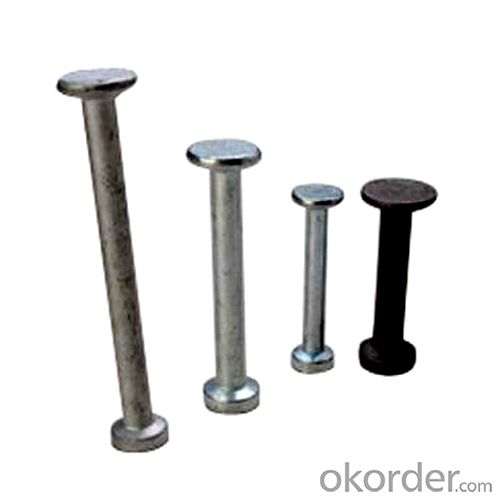
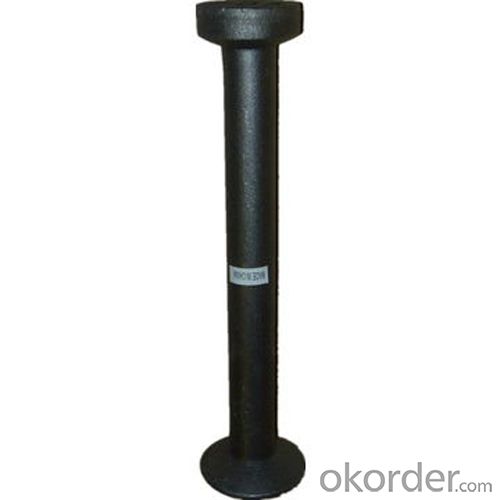
- Q: How can one ensure compatibility between concrete pump spare parts and the pump?
- To maintain the efficiency and performance of the equipment, it is crucial to ensure compatibility between concrete pump spare parts and the pump. Here are several steps to guarantee compatibility: 1. Start by identifying the correct model and manufacturer. Gather all necessary information about the concrete pump, such as the model number and manufacturer. This information will assist in finding spare parts specifically designed for that particular pump model. 2. Always opt for genuine spare parts. It is highly recommended to use authentic spare parts provided by the pump manufacturer or authorized distributors. Genuine parts are designed and tested to meet the pump's specifications, ensuring a perfect fit and compatibility. 3. Verify part numbers and specifications before making any purchases. Carefully compare the part numbers and specifications with the original parts to ensure compatibility with the pump. 4. Seek guidance from experts or the manufacturer's technical support team if unsure about the compatibility of certain spare parts. Their expertise and experience can provide valuable guidance and advice. 5. Regularly inspect and maintain the concrete pump to identify any wear or damage to the parts. This will enable the identification of specific spare parts that require replacement and ensure compatibility with the pump. 6. Prioritize quality and reliability when selecting spare parts, even if cost is a factor. Investing in high-quality parts guarantees better performance, durability, and compatibility with the pump. By following these steps, one can maximize the lifespan, performance, and overall efficiency of the concrete pump by ensuring compatibility between the spare parts and the pump.
- Q: Can concrete pump spare parts be customized for specific pump models?
- Customization of concrete pump spare parts is possible for specific pump models. Concrete pumps are available in various sizes and designs, and each model may have distinct specifications and requirements for its spare parts. To ensure compatibility and achieve optimal performance, it is essential to customize the spare parts according to the particular pump model. This customization may involve adjusting dimensions, materials, and other technical specifications to suit the specific pump model. By customizing the spare parts, a perfect fit is ensured, and the efficiency and longevity of the concrete pump are improved. Furthermore, customization allows for potential enhancements or modifications to the original design, resulting in superior performance and durability of the pump. Therefore, it is vital to collaborate with reputable manufacturers or suppliers who can provide customized concrete pump spare parts for specific pump models.
- Q: Can I get spare parts for both concrete pumps with and without emergency stop systems?
- Yes, spare parts are available for both concrete pumps with and without emergency stop systems. These spare parts can be sourced from authorized dealers or manufacturers, ensuring the proper functioning and maintenance of both types of concrete pumps.
- Q: Are there any specific guidelines for the installation of wear plates or wear rings in concrete pump spare parts?
- Yes, there are specific guidelines for the installation of wear plates or wear rings in concrete pump spare parts. These guidelines typically include ensuring proper alignment and fit, using the correct torque specifications for fasteners, and applying appropriate lubrication. It is important to follow these guidelines to ensure optimal performance and longevity of the wear parts.
- Q: How often should I replace concrete pump spare parts?
- The frequency of replacing concrete pump spare parts depends on several factors such as the quality of the parts, the intensity of usage, and the maintenance practices. However, as a general guideline, it is recommended to inspect and replace worn or damaged concrete pump spare parts on a regular basis, typically every 6 to 12 months, to ensure optimal performance and avoid potential breakdowns or safety hazards.
- Q: How often should the concrete pump wear plate be replaced?
- The concrete pump wear plate should be replaced whenever it becomes significantly worn down or damaged, which typically occurs after every 20,000 to 30,000 cubic yards of concrete are pumped.
- Q: Are there any specific guidelines for the transportation of concrete pump spare parts?
- Concrete pump spare parts have specific guidelines for transportation to ensure their safe arrival and immediate usability. Consider the following key guidelines: 1. Packaging: Adequate packaging is necessary to prevent damage during transportation. This may involve using sturdy boxes, crates, or pallets to protect parts from impacts and vibrations. 2. Labeling: Clearly label each package with its contents, including the specific part name and number. This facilitates easy identification and prevents confusion during transportation. 3. Handling: Handle spare parts with care to avoid mishandling or dropping, which could cause damage. It is recommended to use proper lifting equipment and follow safe handling practices to prevent excessive stress or force. 4. Securing: Properly secure packages to prevent movement or shifting during transportation. This can be achieved by using strapping, shrink-wrapping, or other suitable methods to keep packages in place. 5. Temperature control: If spare parts are temperature-sensitive, ensure proper temperature control during transportation. Extreme temperature variations can damage certain parts, so it's important to protect them accordingly. 6. Transportation mode: Select suitable transportation modes based on the size and weight of spare parts. For larger parts, flatbed trucks or specialized vehicles may be necessary to accommodate their size and weight. 7. Insurance: It's advisable to have proper insurance coverage for the transportation of concrete pump spare parts. This provides financial protection in case of unforeseen incidents or damages during transit. By adhering to these guidelines, concrete pump spare parts can be transported smoothly and safely, guaranteeing their intact delivery and immediate usability.
- Q: How often should hydraulic pumps be inspected or replaced in a concrete pump?
- Regular inspections of hydraulic pumps in a concrete pump are essential for maintaining their proper functioning and preventing potential problems. The frequency of these inspections depends on various factors, such as the intensity of use, operating conditions, and manufacturer's guidelines. Typically, it is advisable to inspect hydraulic pumps in a concrete pump either every 500 to 1,000 operating hours or at least once a year, whichever comes first. However, if the pump is being used under harsh or demanding circumstances, more frequent inspections might be required. The decision to replace hydraulic pumps should be based on their condition and the recommendations provided by the manufacturer. If the pump displays significant wear and tear, leaks, reduced performance, or any other issues that cannot be resolved through maintenance or repair, it may be necessary to replace the hydraulic pump to ensure the safe and efficient operation of the concrete pump.
- Q: What is the function of a concrete pump control box?
- The concrete pump control box is a vital component of a concrete pump system, responsible for managing and controlling the operation of the pump to ensure a safe and efficient pumping process. By utilizing the control box, the operator can initiate, halt, and adjust the pumping speed of the concrete pump. Equipped with various control switches, knobs, and buttons, the control box facilitates control over different aspects of the pumping process. One of the key roles of the control box is to monitor the pressure and flow of the pumped concrete. This data is essential in guaranteeing that the concrete is pumped at the desired rate and consistency. Furthermore, the control box promptly notifies the operator of any irregularities or problems in the pumping system, such as clogs or blockages. Moreover, the control box may incorporate features like emergency stop buttons and safety interlocks to ensure the safety of both the operator and the equipment. Indicators and alarms may also be included to provide visual and audible cues regarding the pump's status and any potential issues that may arise. To summarize, the concrete pump control box's purpose is to equip the operator with the necessary controls and information to operate the concrete pump safely and efficiently. It ensures appropriate monitoring, control, and safety of the pumping process, ultimately leading to successful concrete placement.
- Q: How do I properly maintain and replace wear plates in concrete pump spare parts?
- Achieving optimal performance and durability for your equipment relies heavily on the proper maintenance and replacement of wear plates in concrete pump spare parts. To ensure that your wear plates are adequately maintained and replaced, the following steps can be taken: 1. Conduct regular inspections: It is crucial to regularly inspect the wear plates in your concrete pump spare parts in order to identify any signs of wear or damage. Look for visible indications such as cracks, excessive wear, or deterioration. 2. Thoroughly clean the area: Prior to replacing the wear plates, it is essential to thoroughly clean the surrounding area. Remove any debris, dirt, or hardened concrete that may be present. Utilize a pressure washer or wire brush to effectively clean the surface. 3. Measure the thickness of wear plates: Utilize a precision measuring tool to determine the thickness of the wear plates. Compare the current thickness with the manufacturer's recommended specifications to determine if replacement is necessary. If the wear plates are below the recommended thickness, replacement is required. 4. Remove the old wear plates: Carefully remove the old wear plates using the appropriate tools. Take note of their positions and any alignment marks to ensure proper installation of the new plates. 5. Prepare the new wear plates: Prior to installing the new wear plates, verify that they are the correct size and meet the required specifications for your concrete pump. Inspect the new plates for any defects or damage before proceeding. 6. Apply lubrication: Apply a thin layer of lubricant or anti-seize compound to the mating surface of the new wear plates. This will aid in preventing corrosion and facilitate future replacements. 7. Install the new wear plates: Position the new wear plates accurately, aligning them with any reference marks or indicators. Secure them tightly using suitable bolts or fasteners, taking care not to overtighten. 8. Test and check alignment: After installing the new wear plates, perform a test run of the concrete pump to ensure proper functionality. Check for any leaks, uncommon vibrations, or misalignments. If any issues are detected, address them promptly. 9. Establish a regular maintenance schedule: To prevent premature wear and damage to the wear plates, create a routine maintenance schedule. This may involve cleaning, lubricating, and inspecting the wear plates at specified intervals or after a certain number of operational hours. By adhering to these steps and adopting a proactive approach to wear plate maintenance and replacement, you can guarantee the seamless operation and extended lifespan of your concrete pump spare parts.
Send your message to us
Lifting Anchor Forged Straight Type Long Design IIII
- Loading Port:
- Tianjin
- Payment Terms:
- TT OR LC
- Min Order Qty:
- 100 pc
- Supply Capability:
- 10000 pc/month
OKorder Service Pledge
OKorder Financial Service
Similar products
Hot products
Hot Searches
Related keywords
